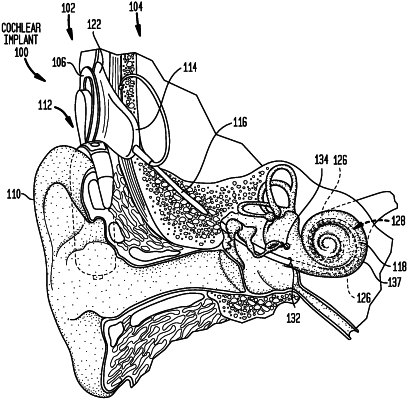| CPC A61N 1/36146 (2013.01) [A61N 1/0541 (2013.01); A61N 1/36038 (2017.08); H04R 25/70 (2013.01); A61N 1/36171 (2013.01)] | 20 Claims |

|
1. A method, comprising:
determining an initial group of operational settings for a medical device associated with a recipient;
determining a target group of operational settings for the medical device;
determining a recipient-specific adaptation model comprising a series of individualized incremental steps for transitioning operation of the medical device from operation in accordance with one or more settings in the initial group of operational settings to operation in accordance with one or more corresponding settings in the target group of operational settings over a period of time, wherein the individualized incremental steps are set based on recipient-specific information associated with the recipient;
programming the medical device to operate in accordance with the initial group of operational settings, the target group of operational settings, and the recipient-specific adaptation model; and
initiating, at the medical device, adaptation from operation in accordance with the initial group of operational settings towards operation in accordance with the target group of operational settings using the recipient-specific adaptation model.
|
|
16. A medical device for use by a recipient, comprising:
one or more processors configured to:
obtain an initial group of operational settings, a target group of operational settings, and a recipient-specific adaptation model, wherein the recipient-specific adaptation model comprises a series of transitional steps that are set based on recipient-specific information associated with the recipient;
program the medical device to operate in accordance with the initial group of operational settings, the target group of operational settings, and the recipient-specific adaptation model; and
adapt operation of the medical device from the operation in accordance with the initial group of operational settings to the operation in accordance with the target group of operational settings using the recipient-specific adaptation model.
|